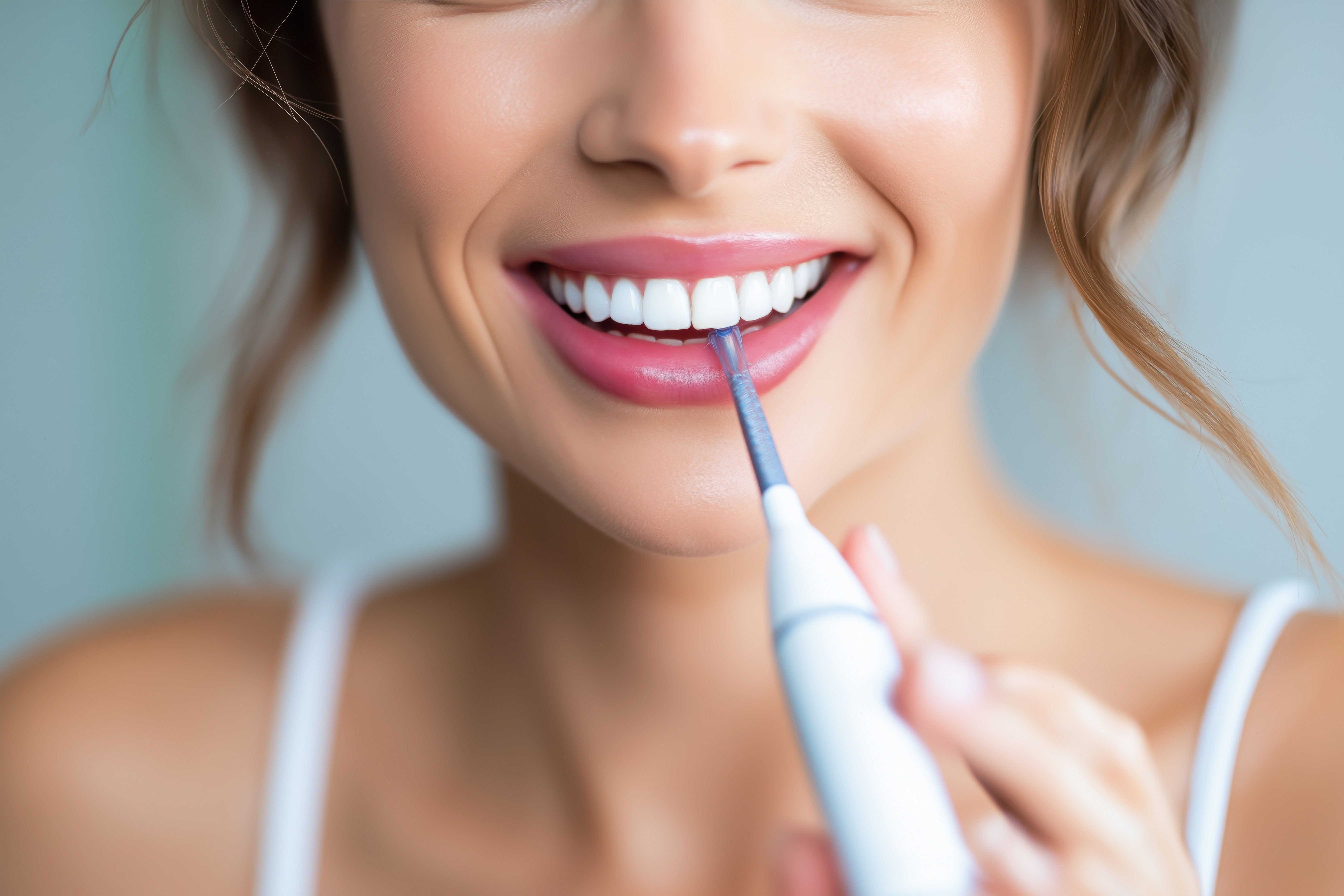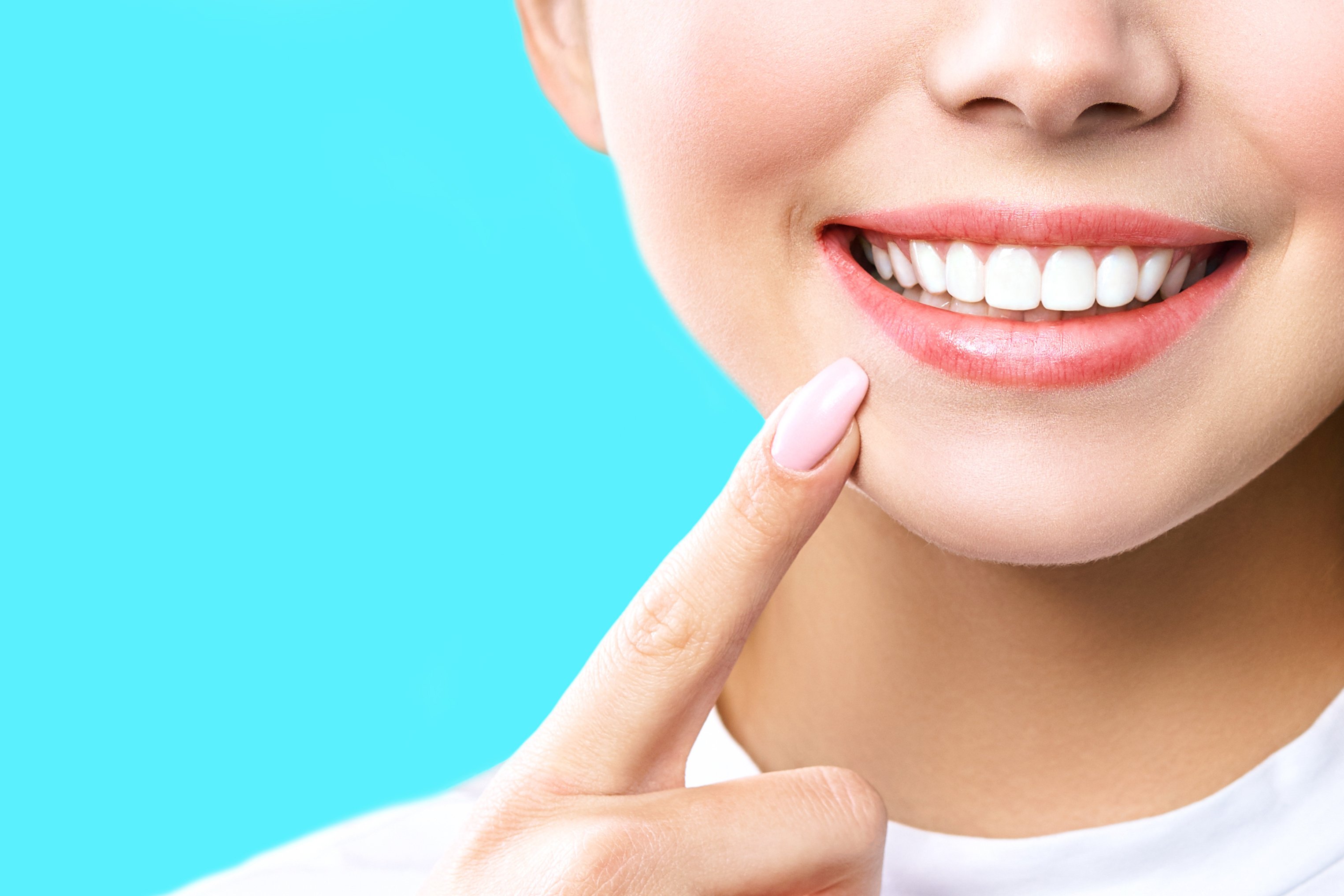Teeth Whitening: Pros & Cons of Teeth Whitening Methods
There are a variety of whitening options that can brighten your smile. That said, they don’t all provide the same results. If you’d like to know more about how to whiten your teeth without damaging your enamel, consider the following guide on professional whitening options available at your dental office:
Teeth Whitening Process
The teeth whitening process can be simple or complex depending on your unique situation and individual goals. There are various ways to reduce tooth stains and brighten your smile. The five most common teeth whitening methods are:
- In-Office Whitening: With these treatments, the whitening solution used is typically stronger than in take-home options. Sometimes ultraviolet light is used to intensify and speed up the whitening process, which can make your teeth several shades lighter. Several visits may be recommended for optimal results, depending on tooth sensitivity and how many levels lighter you wish to be.
- Custom-Made Whitening Trays: This whitening option involves having plastic trays custom-made to fit your teeth perfectly (upper and lower arch), and comes with tubes of professional whitening gel to be added to the trays. The tray with gel is then worn for up to an hour each day until the desired result is achieved. Due to the trays being made to fit your teeth properly, the likelihood of whitening gel leaking onto your gums is significantly reduced, as compared to the ready-to-use kits. This option also makes it easy to do touch-ups regularly, as you can purchase more tubes of whitening gel to use in your trays.
- Ready-To-Use Whitening Kits: Ready-to-use whitening kits are available from your Gentle Dental office and are pre-filled with professional whitening gel for use at home. These kits are quite safe and effective when used as directed, but will typically take a little longer to produce results than the in-office whitening. Also, because they are not custom-fit to your teeth, you need to be careful not to let the whitening gel irritate your gums.
- Smile Whitening Bundle: This bundle of homecare products, available from your Gentle Dental office, includes an Oral-B Pro Electric toothbrush with a special whitening brush head and a ready-to-use whitening kit. The smile whitening bundle is a convenient and affordable option for not only whitening but also maintaining your smile.
- Porcelain Veneers: Some teeth will not respond to traditional whitening methods due to internal discoloration or deep staining. In these cases, porcelain veneers can be a great option. Custom-made and then bonded over the surface of your teeth, these thin sheets of porcelain provide a bright, white smile that looks very natural. To find out more about veneers, talk to your dentist.
Can Bleaching Teeth Harm Them?
Bleaching products can damage tooth enamel and cause other problematic issues to oral tissue. This is why it’s best to avoid do-it-yourself bleaching products and get your teeth whitening treatments from a reputable dental professional.
Advantages and Disadvantages of Bleaching
When performed by a reputable, experienced dentist, bleaching can reduce the appearance of stains and give you a whiter, brighter smile. That said, bleaching products can have multiple side effects, such as gum irritation, enamel damage and tooth sensitivity. You can reduce or avoid these issues by getting your teeth whitening treatments from a knowledgeable dental professional.
Laser Whitening Pros and Cons
Modern laser whitening treatments are a powerful way to brighten your smile. On the plus side, the treatments are fast, precise, efficient and non-invasive. On the downside, they are more expensive and, like other whitening treatments, can sometimes promote tooth sensitivity. Your dentist can tell you more about the treatment and help you decide if it’s right for you.
What to Avoid When Teeth Whitening
To ensure optimal results after your teeth whitening treatment, it’s important to avoid acidic and dark-colored foods and beverages. This includes fruit juices, soft drinks and alcohol, along with tea and coffee. You should also avoid foods with added or natural colorants, such as soy sauce, bologna, ketchup and chocolate. Essentially, if a food or sauce will stain a white t-shirt, it will also discolor your freshly whitened teeth.
Natural Teeth Whitening Myths
Unfortunately, there is an abundance of online myths about natural remedies for whitening teeth. Whether it’s coconut oil, baking soda, strawberries or lemon juice, these so-called natural solutions usually either don’t work or cause unexpected problems. For instance, there is no scientific evidence that coconut oil can whiten teeth. What’s more, solutions comprised of lemon, strawberry and/or baking soda have been shown to damage enamel and reduce the surface hardness of teeth by up to 10 percent.
Most natural remedies only make your teeth appear a little whiter because they are helping to remove plaque accumulation on your teeth. For more noticeable results you need something that will penetrate into your teeth and break down stain molecules.
Teeth Whitening Pros and Cons
As with any cosmetic procedure, there are pros and cons associated with teeth whitening treatments. When performed by an experienced dentist, a quality treatment can give you a whiter, brighter smile. Occasionally, however, a tooth whitening treatment can lead to gum irritation, enamel damage and tooth sensitivity. You can reduce or avoid potential side effects by getting your treatments from a knowledgeable dental professional.
Keeping Your Teeth White
While modern whitening treatments can dramatically change the appearance of your smile, it’s important to remember that these effects are not permanent as staining will continue to occur. However, to reduce the impact of staining, be sure to brush your teeth twice a day and avoid foods and beverages that can stain your teeth.
Get closer to your perfect smile. Book your next appointment at a Gentle Dental location near you.


